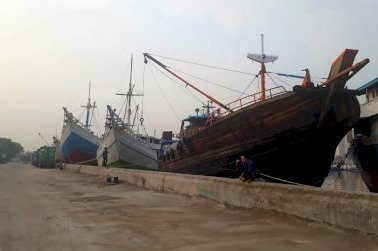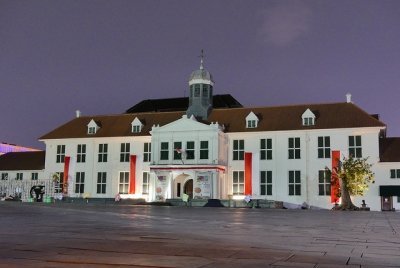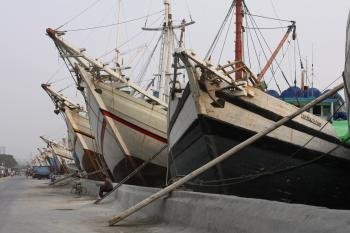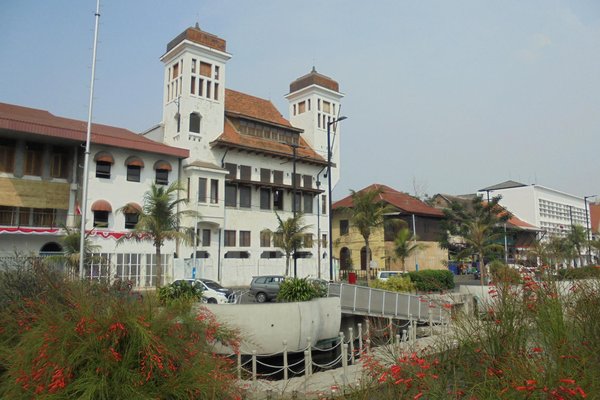Indonesia
Old Town of Jakarta
The Old Town of Jakarta was founded in the 17th century by the Dutch East India Company. Then called Batavia, the town had the largest volume of trade in Asia. A mix of Western culture, Chinese culture, Indian culture and Middle Eastern culture contributed to the Indonesian culture. The remaining structures include houses, warehouses, shipyards and forts from the 17th and 18th centuries. The proposal also includes four Outlying Islands (Onrust, Kelor, Cipir dan Bidadari) in the Bay of Jakarta.
Site Info
Official Information
- Full Name
- Age of Trade: Old Town of Jakarta (formerly Old (ID: 6010)
- Country
- Indonesia
- Status
-
On tentative list 2015
Site history
History of Old Town of Jakarta
- 2018: Requested by State Party to not be examined
- By Indonesia
- 2017: Incomplete - not examined
- .
- 2015: Added to Tentative List
- Added to tentative list
- Type
- Cultural
- Criteria
Links
- UNESCO
- whc.unesco.org
All Links
UNESCO.org
- whc.unesco.org — whc.unesco.org
News Article
- May 25, 2016 bymnews.com — Netherlands. AkzoNobel restoring Jakarta's old town as city bids for UNESCO World Heritage status
Community Information
Travel Information
Recent Connections
News
- bymnews.com 05/25/2016
- Netherlands. AkzoNobel restoring J…
Recent Visitors
Visitors of Old Town of Jakarta
- Adrian Turtschi
- Afshin Iranpour
- Alejandro Lau
- Alexander Parsons
- Alex Goh
- A. Mehmet Haksever
- Argo
- basementonline
- Bernard Joseph Esposo Guerrero
- Bin
- Boj
- Christravelblog
- Clyde
- Danieljbromberg
- Delphine Delaunay
- Dimitar Krastev
- Dwikusuma
- Elisabeth Fransisca Situmorang
- Eric Lurio
- Erik Jelinek
- Francky D'Hoop
- Frédéric M
- Frederik Dawson
- Hadrianus
- Harry Mitsidis
- henrik_hannfors
- henryjiao18
- Hughes1920
- Jacob Otten
- Jan-Willem
- Jarek Pokrzywnicki
- Joel on the Road
- Jon Opol
- JoStof
- Lithobates
- Lucas Del Puppo
- Ludvan
- Luke LOU
- Mahuhe
- Marton Kemeny
- Michael Turtle
- Mkandasa
- MMM
- Nick Kuzmyak
- Patrik
- Paul Schofield
- Pchxiao
- Riccardo Quaranta
- Rick Ohm
- Roger Ourset
- Roman Bruehwiler
- S. Anril Tiatco
- Sclowitz
- Shandos Cleaver
- Solivagant
- Ssong.x
- Stanislaw Warwas
- Szabolcs Mosonyi
- Szucs Tamas
- Tatiana Nikulnikova
- Tevity
- Thomas Buechler
- Thomas van der Walt
- Tikhon Puliaev
- tingmelvin
- tony0001
- Tony H.
- triath
- Vanessa Buechler
- Vernon Prieto
- WILLIAM RICH
- Xiquinho Silva
Community Reviews
Show full reviews
For the simple reason that Macao and Melaka were able to get into the list seemingly smoothly (and it's really a mystery how they got in, especially if we apply to them the same standards we are using now in judging this tentative site), I see no reason in principle why Batavia needs to be left out. More importantly, Batavia was far more pivotal than the two during the age of trade, playing a most key role in the growth of the Dutch empire as a global superpower -- that's a fact that the East and West can easily agree on. It's history is monumental. While the accusation that "it lacks a cohesive area representing its golden age" is justified (it is not like Hoi An or Vigan, true), the evaluation is certainly not: Even with its stadthuis and Sunda Kepala area alone, an OUV can already be established (Bremen can attest to this approach). The fascination with the notion of "the more old buildings, the better" is getting more and more problematic and rather undynamic. That measure alone is not even a good yardstick in the valuation of heritage especially in Southeast Asian contexts.
Another welcome alternative is to catapult Batavia/Old Jakarta to the spice trade route sites, a highly promising WHS nomination that Indonesia seems to be pursuing. This is an interesting website to explore: www.jalurrempah.kemdikbud.go.id
I visited Batavia in Dec. 2018, and stayed at a hotel beside the old town square for two nights. Glodok …
Keep reading 0 comments
I spent two nights in Jakarta and did my best to cover as many Dutch colonial buildings in the Old Batavia centre as possible. Even though the crumbling infrastructure and overall hygene (open sewers, rats, cockroaches, etc.) of the old historic centre need to be addressed, on par with the rest of the highly developed areas of Jakarta, there seems to be enough OUV and potential for this site to become a WHS. It reminded me mostly of Macao, Hong Kong or Singapore.
I specifically chose a hotel close to the neighborhood known officially as Kota Tua which mostly contains Dutch colonial structures dated from the 17th century, when the port city served as the Asian headquarter of the Dutch East India Company or VOC. There's also a Chinese downtown area known as Glodok which is part of Kota Tua. I found this area very interesting to visit as I had read Simon Winchester's Krakatoa: The Day the Earth Exploded which gave me invaluable historic details and information about the most important buildings and it was of great help to give me some context.
Old Batavia was the first walled settlement of the Dutch in the Jakarta area. It was an inner walled city and it was established as the capital of the Dutch East Indies. This inner walled city contrasted with the surrounding kampung or villages and rice fields. It was a center of commerce due to its strategic location within the spice trade industry in Indonesia. …
Keep reading 0 comments
The Old Town of Jakarta/Old Batavia comprises many sites and covers quite large area. The "common" Old Jakarta is very easy to access and a very common place to hang around for youngsters and family during the weekend. The atmosphere can be very crowded but uniquely alive with thick senses of "Old Batavia" all around.
The outlying islands are also easy to access with day tour packages, departing from a fish market, nowhere near the 'common' Old Town. Within those islands, what's left of former barracks, hospitals, towers, etc are everywhere to be seen and experience.
It's a nice site (or should I say, sites) to be on the list. Each of the buildings and islands embraces universal values that makes what's Jakarta today, how it was, and what could have been different.
Keep reading 0 comments
